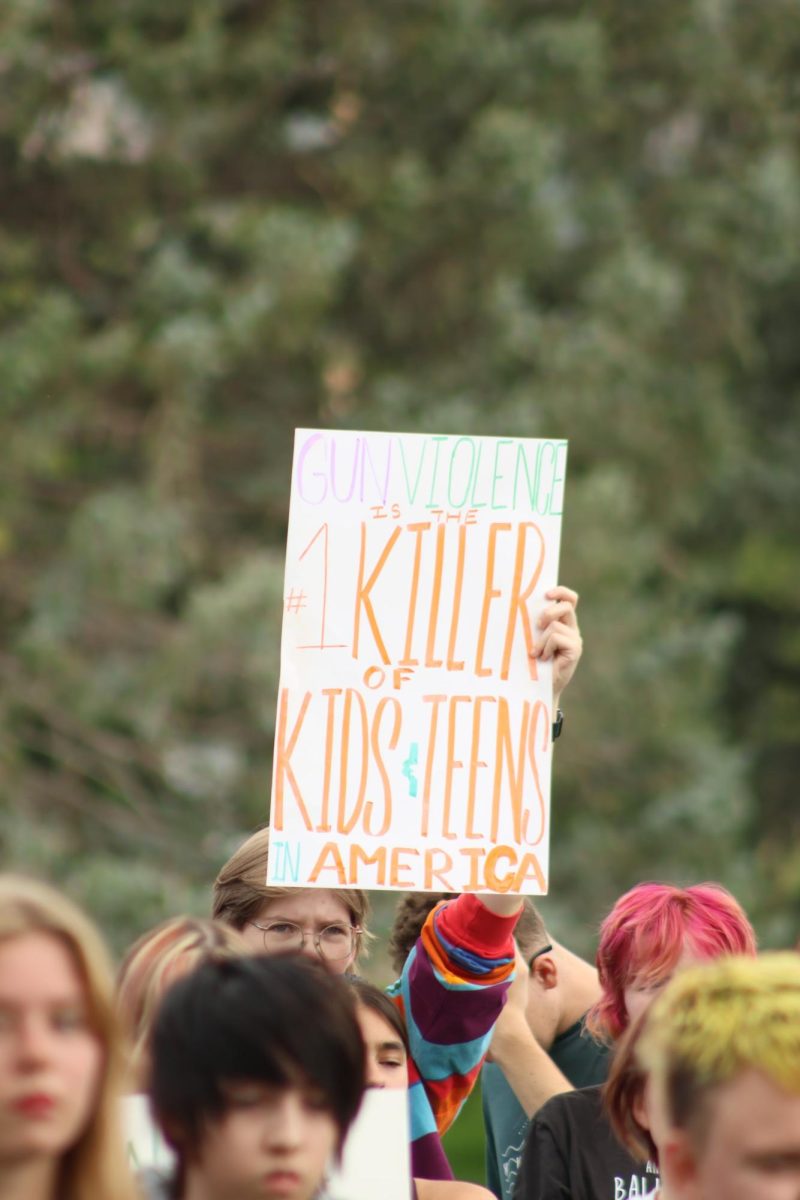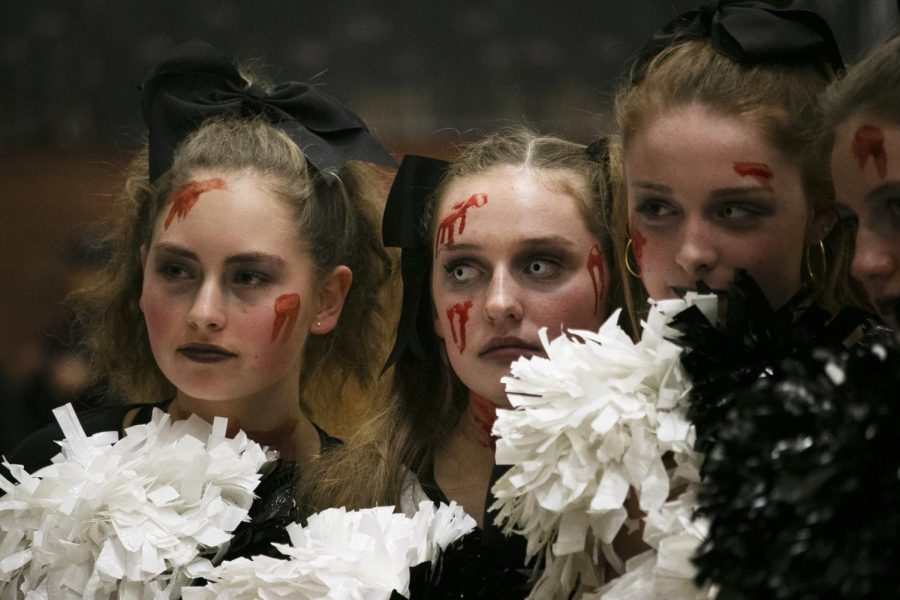The first day of college. People are bustling around, organizing rooms, catching up with friends, planning for the new year. Parents are waving goodbye to their kids who they suddenly won’t see every day. A cheery and hopeful day.
A month later, the cheer has left, the hope a distant memory… especially for the kids who have only just started. They are far behind.
Students across the country routinely take the easy way out because it is given to them. Deadlines aren’t enforced, attendance isn’t enforced, and critical thinking has fallen to the wayside. COVID shattered everything, and schools are still trying to pick up the pieces.
A paper by Jill Barshay of The Hechinger Report that was published in August outlined through various studies that kids now need up to nine months to catch up to where their peers were pre-pandemic. This is caused by online school, which saw stagnation in students’ reading and math levels.
An audit by the state of Utah, released on Dec. ninth, found that student test scores have stagnated across the state since COVID as students are still struggling to catch up.
All this means that kids are entering high school unprepared, leading to more time being spent on review than before COVID.
This is true in Highland as well as everywhere else.
“My first four years of teaching, I taught seventh, eighth, and ninth at junior high,” Emily Paxton, an English teacher who mainly teaches ninth graders, said. “And I feel like reviewing with my freshmen now. I’m having to explain stuff that my eighth graders knew coming into eighth grade. So, they’re basically a year behind.”
Kids are now going into college and the real world without being the most prepared they could be, not even as much as prior classes.
Academically, that’s on students. Students have stopped engaging as much in class, rather opting for what Paxton called a “just tell me how to finish this” attitude.
“It’s, ‘tell me what I need to do to be done with this assignment, or this essay, or this book,’” Paxton said. “Whereas before, I feel like students wanted to discuss and analyze and think critically about what we were doing.”
It’s a loss in critical thinking. Students have disengaged because COVID lowered the bar, and schools have struggled to raise it back up again.
But it is not only on students. COVID also ruined the expectations placed on students.
With the increasing visibility towards the stresses kids face and how many feel overwhelmed, there has been a nationwide push to eliminate as much stress and anxiety as possible from students’ lives. While that certainly has its benefits, it’s manifested in almost a complete lack of enforcement of deadlines.
The concern over student stress has almost created the assumption that students are fragile and need to be handled with care.
Some teachers see this as a bad thing.
“The only way we as humans grow is by going through difficulties and going through hard times,” Ted Sierer, Highland’s psychology teacher, said. “So, if we take away every hard thing students have to do, we’re kind of setting students up for failure, because life, once they leave high school, life is not going to worry about giving you hard things. Life’s gonna come at you hard.”
Others worry what not enforcing deadlines teaches students.
“When we [teachers] constantly allow late work, we’re teaching kids the deadlines don’t matter,” Carleen Burnell, a Highland English teacher who primarily teaches concurrent enrollment classes for seniors, said. “We’re teaching them not to follow through on what should be their responsibility to complete their work. And, that the work should be completed in the time frame given because work builds on work.”
It teaches students that they don’t have to put in the work, and that really, they don’t have to try. Naturally, when they’re suddenly forced to go from being able to turn work in whenever in high school with no penalty to there being a strict deadline with almost no exceptions in college, they’re going to struggle to adapt.
“I can say that there are times where I’m worried about how they’re going cope in the world,” Burnell said. “When push comes to shove and they really have to follow through and they have to do the hard things, I sometimes do wonder, are they going to be able to do that.”
It appears to a lot of people that there’s almost a culture of fragility in schools across America. Students are treated like pieces of China that could break if too much pressure is put on them.
Students commonly aren’t forced to follow deadlines because there’s no penalties. Most teachers at Highland don’t care when the work is turned in as long as it’s before the end of term.
Burnell sees that as a mistake.
“Kids aren’t fragile,” Burnell said. “They have the ability to be strong and to be resilient with support. And I think that one of our jobs as teachers is to help them know that they are strong and that they are resilient and that they can get through the difficulties of their life that. And that they are capable of getting through the difficulties of their life. Yes, they might need some support, and they might need help, but that’s what we’re here for: is to give them that help and support. But to treat them like they’re fragile pieces of China, [like] they can’t handle the world with their difficulties is a mistake, in my opinion, because they can. They just need to be helped to learn how to do that.”
It teaches students that they can’t do hard things.
When they are allowed to use stress as an excuse to not follow through, to not have to put in the work, they never discover their true ability.
“Stress by itself is not a bad thing,” Sierer said. “Stress makes athletes rise to the occasion and hit game-winning shots. It helps people deal with pressure and come up big under pressure situations.”
The problem now is an overcorrection of a previous problem. With the pandemic, people were lonelier than ever, felt more stressed out because they were cooped up with all their problems, and had a lot of pent-up anger at the world. A lot of people wished for less stress, believing that removing stress would bring much-needed peace to their lives.
As a result, students aren’t pushed because teachers don’t want to stress them out. Not only does this not work because suddenly it’s the end of term and many students are racing to do a whole term’s worth of work in one week, but also, now that these stressors have been somewhat removed or at least pushed off, students don’t learn to believe in themselves.
“There’s this phenomenon called ‘self-fulfilling prophecies’ that happens psychologically,” Sierer said. “And here’s what I worry about happening with current high school students: when all the stressful situations are removed from their lives, inside their minds, that’s telling the students they’re taking away stress because I can’t handle it. And then therefore when they have stress outside of school, the message has already been sent to them, ‘you can’t handle stress,’ so either they don’t know how to handle it, and they run from it. Or they avoid doing anything hard because their whole life they’ve been taught you can’t do hard things.”
To help with this, Sierer advises taking a rigorous schedule, even if means not getting an A. He argues that a well-earned C or B will have a much more positive impact than any easy A would have.
Students are also let off the hook when it comes to attendance.
When COVID was in full swing, many states got rid of their truancy laws. Because it was so hard to enforce and because there were so many better hills to die on, such laws fell to the wayside.
Even though COVID is gone, truancy laws still haven’t come back. This has led to a massive problem in America. Data from Ed Data Express shows that in the 2021-2022 school year, 30% of American students were chronically absent, meaning they missed 10% of school, or 18 out of 180 days.
That number hasn’t recovered much.
Utah’s legislature only reinstated truancy laws last year, and the district is yet to finalize policies and procedures concerning truancy, so nothing has started to be enforced.
But there are some certainties as to what consequences will look like.
“There are letters that are sent home to parents if a student misses five, 10, or 15 days or more school. If a student misses 10 consecutive days, they’re unenrolled,” Amberle Shaffer, Highland’s administrative secretary, said.
“Truancy courts are going to be becoming a thing again,” Shaffer said. “I don’t know the criteria, I don’t know the exact procedures they’re going to want to be doing because the district hasn’t finalized that, but students are going to begin to be referred to truancy court.”
Highland is already seeing changes.
Highland has stopped allowing blanket reasons for excusing students from school. Before, a parent could excuse their student for any reason under the sun. Now, there are set reasons why students can be excuses. Anything else counts as an unexcused absence.
This comes as Highland faces its own chronic absence problem.
According to data from Highland’s attendance office, more than 300 students have unexcused absences in five or more classes a week. When looking just at students who are unexcused in at least one class per week, that number jumps to just over 1,000.
“Half of the student body is missing one or more classes a week,” Shaffer said.
The problem is that once students enter college, they’ll still have the mentality that they can skip class whenever they feel like it. The difference is that skipping class will cost them dearly, especially as the cost to attend college continues to rise.
Students won’t be prepared for the rigor of college unless they come to terms with both said rigor and their own abilities. That change has to start at the schools.
“You have to prepare for the things that you think you’re going to encounter in some ways,” Burnell said. “And high school is one of those things, especially upperclassmen, where you’re preparing to go out into the world. And if you can’t handle what’s going on in high school as far as responsibility, following through, those kinds of things, how are you going to do that when you get out of school. Is there almost going to be a magic wand that waves, and you become a different person than what you are when you left the school? And that’s what I’m worried about.”
There is hope in all these worrying trends. Kids today still have locked away inside of them all the passion and motivation of previous generations. They will rise to the occasion if given the opportunity.
Schools just have to give them that chance.
Treating Students As Fragile Is Hurting
Students Are Struggling To Catch Up Academically
Luca DiGregorio, Editor-in-Chief
December 20, 2024
0






























